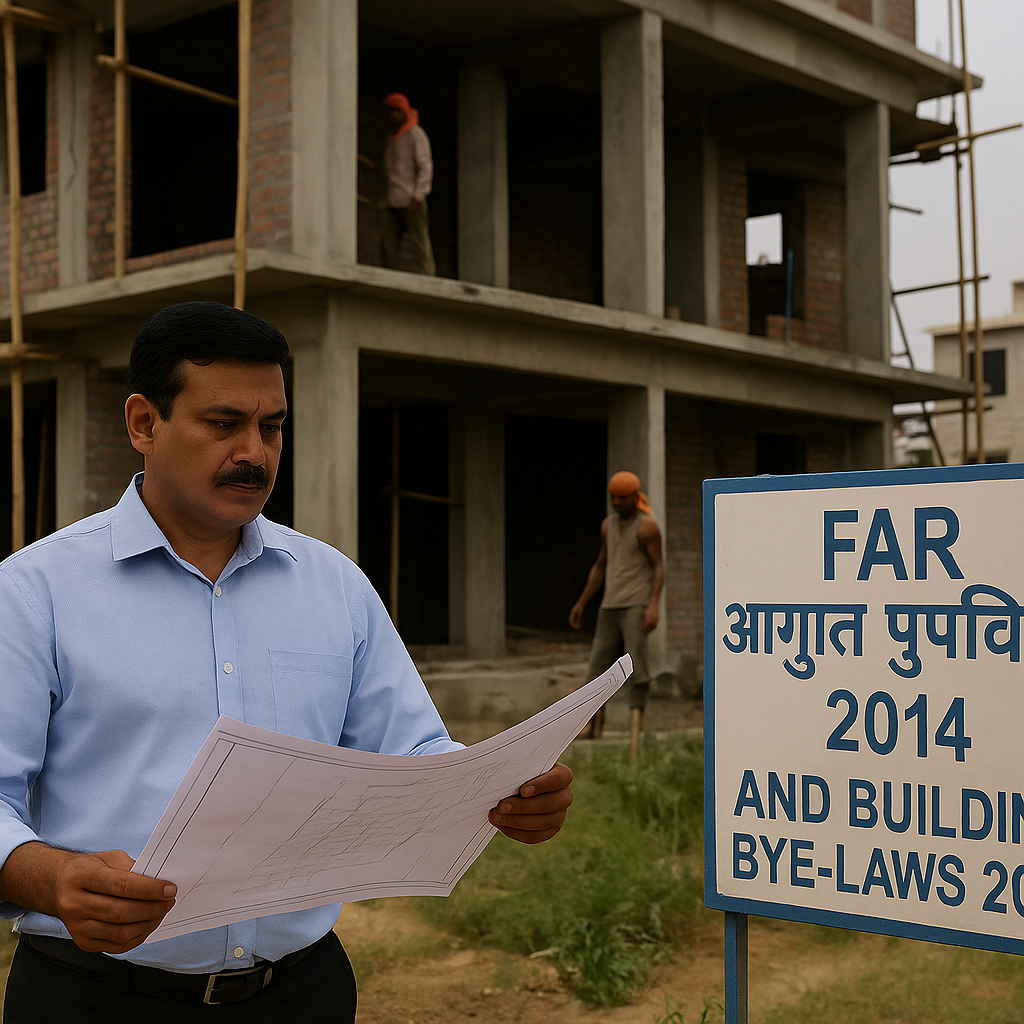Introduction
In cities like Patna, Gaya, and Muzaffarpur, many people face problems when constructing or modifying buildings—such as building plan rejections, height restrictions, or notices for illegal construction. Often, these issues arise from not following the rules set out in the Bihar Building Bye-laws, 2014.
These Bye-laws were created to ensure safe, legal, and well-planned construction across Bihar’s urban areas. Whether you’re a homeowner building your first house or a contractor working on a commercial building, these rules apply to you. Many disputes under these Bye-laws have even reached the Patna High Court, especially regarding zoning, building height, and setbacks.
This article explains the Bihar Building Bye-laws, 2014 in plain language, helping you understand how they affect your property plans.
Simplified Explanation of the Law
Purpose of the Bye-laws:
The main goal is to ensure that all buildings in urban Bihar are constructed safely and legally. The Bye-laws regulate where you can build, how much you can build (height and area), and how close your building can be to the road, neighboring properties, and public utilities.
Who is affected?
- Property owners in municipalities and notified areas
- Builders, architects, and contractors
- Residents applying for building plan approvals
- Housing developers and commercial project managers
Why were they introduced?
Before 2014, building regulations varied across cities, leading to confusion, encroachment, and safety risks. These Bye-laws brought uniformity to construction rules across Bihar and gave authorities clear guidelines for granting or denying building permissions.
Key Legal Provisions
Here are some of the important and commonly applied provisions from the Bihar Building Bye-laws, 2014:
1. Setbacks and Margins (Chapter 3)
A minimum distance must be maintained between your building and the property boundary. This ensures light, ventilation, and safety. For example, a house built on a 300 sq. meter plot must leave a setback of at least 1.5 meters on each side.
2. Floor Area Ratio (FAR) Limits (Chapter 4)
FAR determines how much you can build on your land. For example, for a road less than 6 meters wide, the maximum FAR is 1.5, and the maximum building height allowed is 7 meters.
3. Basement Rules (Clause 11.2)
Basements are only allowed below the ground floor and must follow structural safety norms. They cannot be used for commercial purposes unless permitted.
4. Staircase and Fire Safety (Clause 9.1)
Every building must have stairs of specified width. Multi-storey buildings need fire exits, fire alarms, and proper ventilation to ensure safety during emergencies.
5. Parking Norms (Chapter 6)
Parking space must be provided within the premises. For residential buildings, at least one parking space is required for every 100 square meters of built-up area.
6. Rainwater Harvesting (Clause 12.1)
Buildings on plots larger than 300 sq. meters must include a rainwater harvesting system to recharge groundwater.
Recent Judgments or Court Interpretations
1. Patna High Court on Unauthorized Construction
The Patna High Court has repeatedly stated that constructions violating building Bye-laws—such as exceeding height limits or encroaching on setbacks—can be demolished. The court upholds that ignorance of the Bye-laws is no excuse.
2. High Court on Public Safety
In a recent case, the court stopped the occupation of a multi-storey apartment due to the absence of proper fire safety clearances. The court emphasized that safety approvals under the Bye-laws must be strictly followed before granting occupancy certificates.
Bihar-Specific Rules or Notifications
The Bihar Building Bye-laws, 2014 themselves are a state-specific regulation issued by the Urban Development and Housing Department of Bihar. The PDF includes details tailored for various urban bodies like:
- Municipal Corporations (e.g., Patna, Gaya, Bhagalpur)
- Nagar Parishads and Nagar Panchayats
- Planning areas notified under the Bihar Urban Planning and Development Act, 2012
Supplementary circulars have also clarified:
- Online Building Plan Approval System (OBPAS): Introduced to speed up plan approvals
- Revised Fees for Plan Approval and Occupancy Certificates: Issued by Bihar’s UDHD in 2018
These amendments are enforced by Urban Local Bodies and monitored by development authorities in respective cities.
Practical Application in Bihar
Example 1: Building Rejection in Patna
A homeowner submitted a plan for a 5-storey house near a 5-meter wide road in Patna. The Municipal Corporation rejected it citing the 2014 Bye-laws, which allow only a 7-meter-high building and 1.5 FAR for such road widths.
Example 2: Commercial Building in Muzaffarpur
A builder received a notice for failing to provide parking space in a commercial building. Under the Bye-laws, every 75 sq. meters of commercial space requires at least one car parking space, which he had missed.
Frequently Asked Questions (FAQs)
1. Can I build a 4-storey house next to a narrow road in Bihar?
No, the building height and floors depend on the road width and FAR. For roads less than 6 meters wide, you are generally limited to 7 meters height (about 2 floors).
2. Is rainwater harvesting compulsory in Bihar?
Yes, for plots larger than 300 sq. meters, rainwater harvesting is mandatory as per the 2014 Bye-laws.
3. Do I need approval to build a basement?
Yes. Basements require prior permission and must follow specific safety and usage conditions.
4. What if I don’t leave a setback?
Your building plan will likely be rejected. If you build anyway, it may be declared illegal and face demolition.
5. Can a plan approval be done online?
Yes. Most cities in Bihar now use the Online Building Plan Approval System (OBPAS) to file applications and track approvals.
Guidance for Readers
If you’re planning to build, renovate, or buy property in any city or town in Bihar, understanding the Bihar Building Bye-laws, 2014 is crucial. Violating these rules can lead to project delays, legal notices, or even demolition. Since the rules are technical and case-specific, consulting a qualified architect or legal professional can help you avoid costly mistakes. When in doubt, seek advice before starting construction.
Please find a link to the Bihar Prohibition & Excise Act, 2016 here








